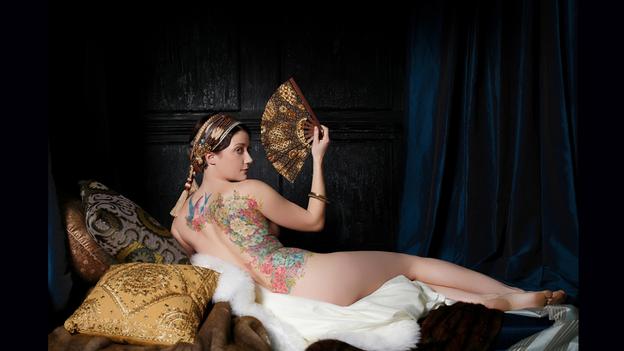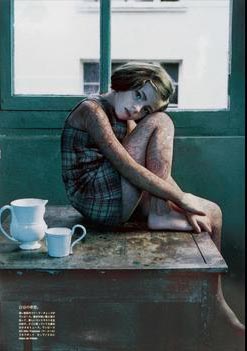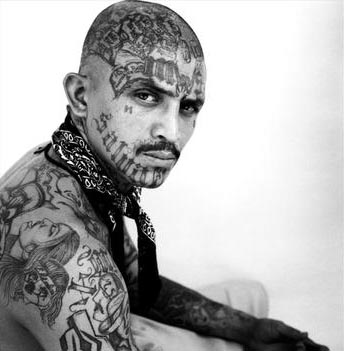Susanna Kumschick, a Swiss anthropologist, has curated an exhibition in Hamburg charting 150 years of body art. “I started with skin, because I really think if you are studying tattooing, you need to look at human skin closely too,” Susanna explains. She believes that the tattoo industry has not been represented enough when discussing anthropology in relation to art and design and after much research she “was surprised that it wasn’t actually a subject in art and design museums until recently.”
Thea Duskin, Untitled 2011
Kumschick discusses how tattoos have been represented throughout history in artists’ work, “They were always inspired by the aesthetics, from early on – the human body has been a subject in art for a long time, and so is painting on the body.”
The artist Fumie Sasabuchi adds tattoos to photographs taken from fashion magazines using traditional motifs taken from the Japanese Yakuza mafia. “Tattooing is more fashionable because we show our skin much more than in the past, so it’s more of a communication medium. We should look at them closely, because it depends where you have them on your body – you’re saying different things by the location you choose. It’s normal to have one today but it’s still a statement if you put one on your face, unlike one on your chest or ankle.” The image below was created from a photograph taken from children’s magazine Vogue Angels.
She also looks at how tattoos can stigmatise certain people. The photographer and filmmaker Christian Poveda spent a year with members of the Mara 18 gang in El Salvador, who cover themselves in tattoos marking the numbers of people they’ve killed or commemorating the death of a fellow gang member.
The exhibition is at MK&G in Hamburg until 6 September 2015.


